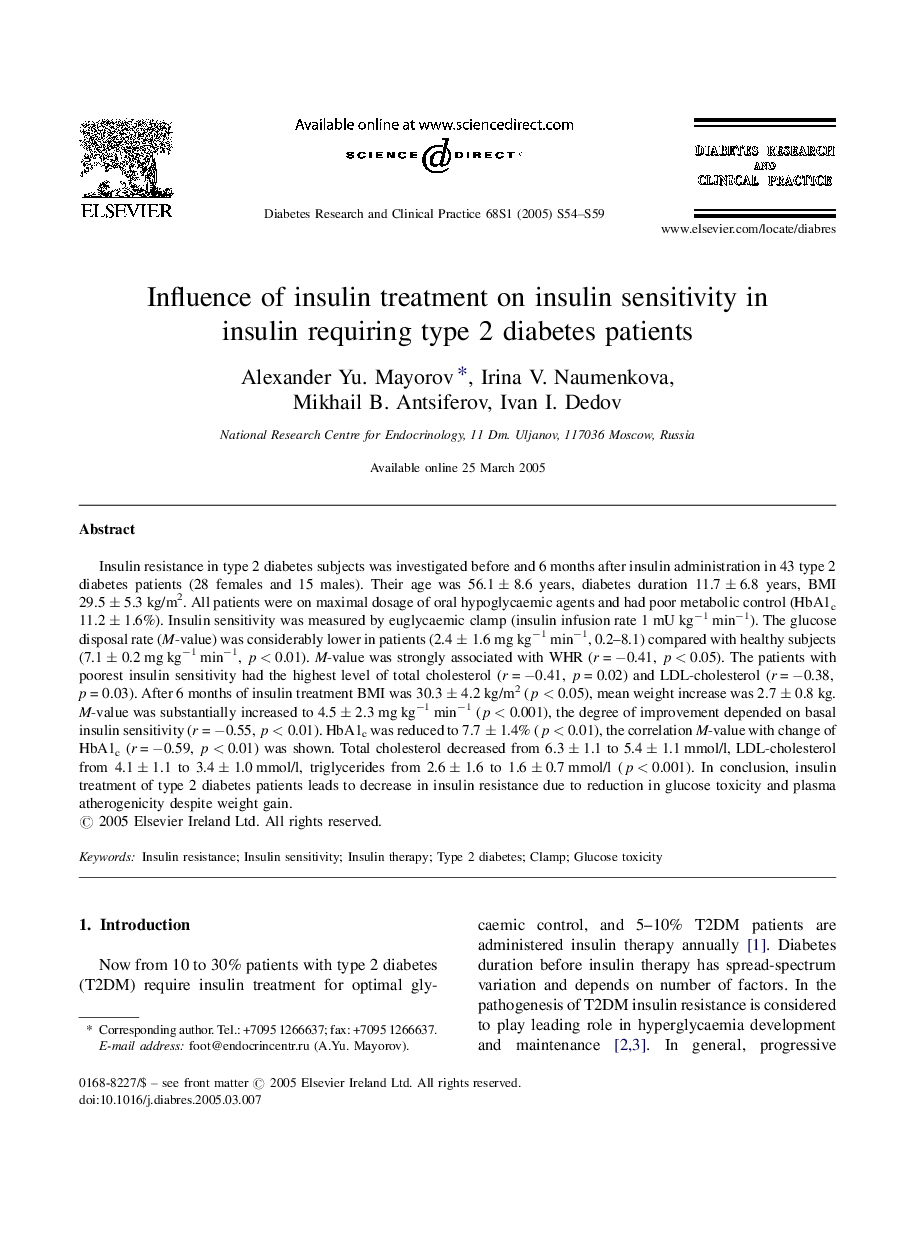| Article ID | Journal | Published Year | Pages | File Type |
|---|---|---|---|---|
| 9112361 | Diabetes Research and Clinical Practice | 2005 | 6 Pages |
Abstract
Insulin resistance in type 2 diabetes subjects was investigated before and 6 months after insulin administration in 43 type 2 diabetes patients (28 females and 15 males). Their age was 56.1 ± 8.6 years, diabetes duration 11.7 ± 6.8 years, BMI 29.5 ± 5.3 kg/m2. All patients were on maximal dosage of oral hypoglycaemic agents and had poor metabolic control (HbA1c 11.2 ± 1.6%). Insulin sensitivity was measured by euglycaemic clamp (insulin infusion rate 1 mU kgâ1 minâ1). The glucose disposal rate (M-value) was considerably lower in patients (2.4 ± 1.6 mg kgâ1 minâ1, 0.2-8.1) compared with healthy subjects (7.1 ± 0.2 mg kgâ1 minâ1, p < 0.01). M-value was strongly associated with WHR (r = â0.41, p < 0.05). The patients with poorest insulin sensitivity had the highest level of total cholesterol (r = â0.41, p = 0.02) and LDL-cholesterol (r = â0.38, p = 0.03). After 6 months of insulin treatment BMI was 30.3 ± 4.2 kg/m2 (p < 0.05), mean weight increase was 2.7 ± 0.8 kg. M-value was substantially increased to 4.5 ± 2.3 mg kgâ1 minâ1 (p < 0.001), the degree of improvement depended on basal insulin sensitivity (r = â0.55, p < 0.01). HbA1c was reduced to 7.7 ± 1.4% (p < 0.01), the correlation M-value with change of HbA1c (r = â0.59, p < 0.01) was shown. Total cholesterol decreased from 6.3 ± 1.1 to 5.4 ± 1.1 mmol/l, LDL-cholesterol from 4.1 ± 1.1 to 3.4 ± 1.0 mmol/l, triglycerides from 2.6 ± 1.6 to 1.6 ± 0.7 mmol/l (p < 0.001). In conclusion, insulin treatment of type 2 diabetes patients leads to decrease in insulin resistance due to reduction in glucose toxicity and plasma atherogenicity despite weight gain.
Related Topics
Life Sciences
Biochemistry, Genetics and Molecular Biology
Endocrinology
Authors
Alexander Yu. Mayorov, Irina V. Naumenkova, Mikhail B. Antsiferov, Ivan I. Dedov,
